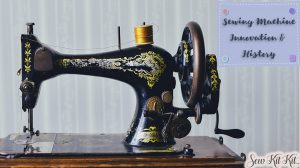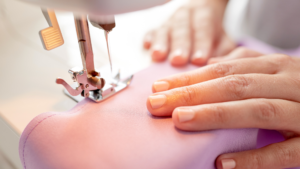Last Updated on October 19, 2021
Have you been in a scenario where you wanted to use a particular sewing foot but found out that it isn’t compatible with your machine? This mishap happens because of the shank of a sewing machine.
But here comes low shank sewing machines. A low shank sewing machine is accommodating to changes, allowing sewers to complete different projects.
What is a low shank sewing machine? A low shank sewing machine is a sewing machine that has a smaller rod between the attachment screw and the presser foot. The length of the rod is approximately ¾ inch, and this part offers a lot of options for hobbyists when it comes to switching the foot.
What Is A Shank?
To completely understand the difference between a low shank machine and a high shank machine, you have to know first what a shank is. By definition, a shank is the metal rod that holds the presser foot in your machine.
The rod is small in low shank sewing machines, making the distance between the presser foot and the attachment screw ¾ inch or even less. Newer models of low shank sewing machines have completely disregarded the shank in their designs.
A high shank sewing machine has a rod-to screw distance of 1 inch or more. Before we determine your machine’s shank size, you may be wondering what a shank is.
As stated before, a shank is the metal rod that the presser foot is attached to. Most of the modern consumer sewing machines are low shank by design. It means that the distance between the bottom of the presser foot and the screw is three-quarters of an inch or less.
This feature allows hobbyists to utilize a wider variety of presser feet available in the market. While using a low shank sewing machine, you will be able to use many different types of time-saving presser feet, which are easily available in the market. For example, using a zipper foot will help you sew very close to the zipper coils, which will improve the zipper’s functionality and maintain a polished look after sewing.
Buttonhole feet will help you keep all your buttonholes uniform in size and shape and allow you to repeat the pattern efficiently. A blind hem foot will let you create an almost invisible hemline for skirts and dresses.
Jeans’ feet will allow you to sew through tough and heavy fabric like denim with precision and ease. These are only some of the wide variety of presser feet available in the market today.
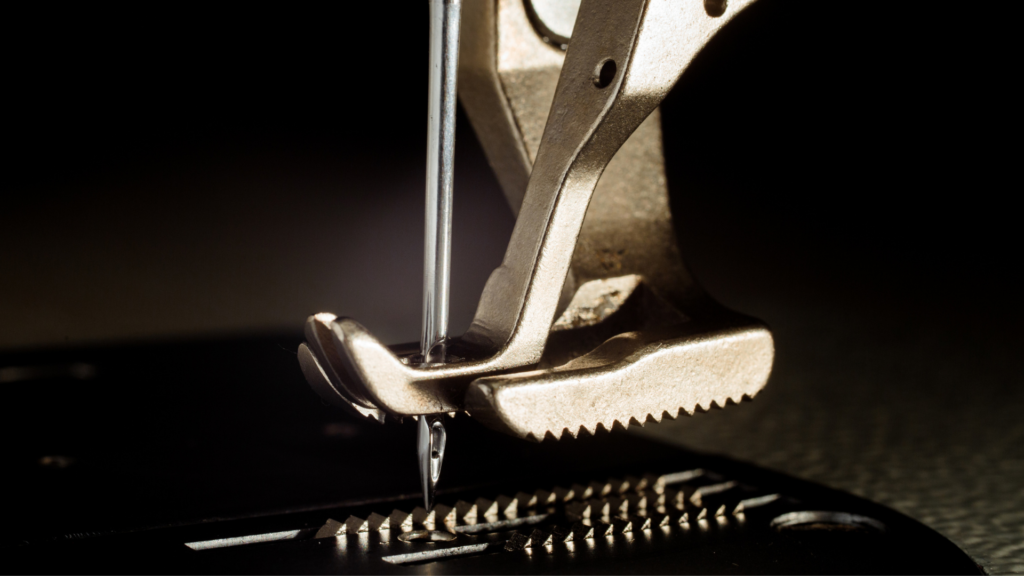
Understanding The Basics Of A Low Shank Sewing Machine
This sewing machine is a machine with a small rod that is three-fourths in length, which is in between the presser foot and the attachment screw. The primary use of this rod is to hold the presser foot.
What Are The Things Low Shank Sewing Machines Can Do?
The smaller rod found in low shank sewing machines is what enables the mechanism to fit different types of feet depending on the fabric being worked on. This versatility is what appeals to most beginners and hobbyists working on their techniques and projects. Here are some examples of different presser feet you can use on a low shank sewing machine with their intended purposes:
- Keep the buttonhole size consistent throughout sewing
- You can sew zippers to have a functional and organized finish
- Sew tough fabrics like denim
- Create professional-looking hemlines on clothing
- Sew fine and tight stitches
- Create piping on clothing
Low Shank Sewing Machine At A Glance
- You can lower your presser foot into a downward position.
- The next step is to properly measure the distance from the presser foot holder screw and your machine bed
- When dealing with the resulting length, you can expect it to be half an inch to give the idea that it has low shank abilities. If it is longer than an inch, then the model will become a high shank sewing machine.
High Shank VS Low Shank Sewing Machine
It is relatively easy to distinguish a low shank sewing machine from a high shank machine. It is determined by measuring the shanks themselves. The shanks from high shank machines will always measure over an inch.
High shank sewing machines tend to be more expensive as they’re the brand’s top-of-the-line models with fancier features and are designed for industrial use. That being said, you can use low shank adapters to allow high shank machines more feet options for versatility.
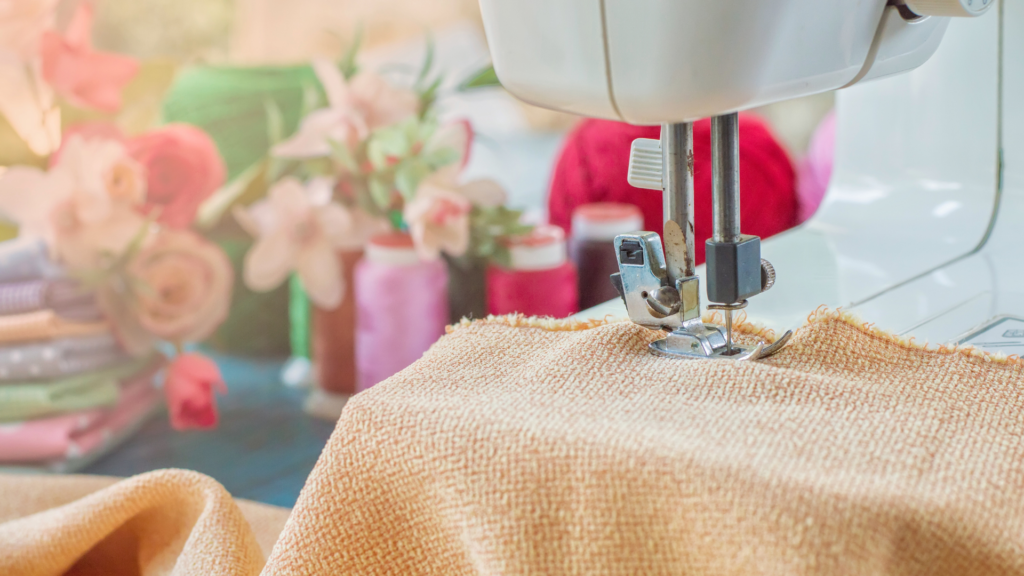
Which Sewing Machines Are Low Shank?
Typically, low-end models and household sewing machines are considered low shank sewing machines, while the pricier, high-end models are regarded as a high shank. It is worth noting, however, that some brands have machines that are considered medium shanks. When it comes to these types, you can use adapter shanks to fit more presser foot types from other models.
1. Singer sewing machines
Singer often houses low shank sewing machines. However, they are not limited to the low shank variety as they also feature high and slant shank machines.
2. Brother sewing machines
Brother does offer high shank sewing machines, but the models you’ll typically find in the market are low shank. It shouldn’t be too surprising since Brother has always catered their machines for household usage.
3. Pfaff sewing machines
Pfaff sewing machines tend to be medium shanks which are neither high nor low shanks. The only way to make sure is to check and measure your own unit to determine which shank is being used.
4. Kenmore sewing machines
Much like other brands, Kenmore offers a lot of different types of shanks for sewing machines. In the case of low shank Kenmore sewing machines, you may choose to have either a top-loading or front-loading sewing machine.
5. Husqvarna sewing machines
Husqvarna makes both high and low shank sewing machines. They also even have slant-style ones similar to slanted models from Singer.
6. Janome sewing machines
For many years, Janome sewing machines have offered great tools, including high shank and low shank sewing machines. Their high shank models are often used as embroidery machines, while most quilting machines are usually low shank.
Types Of Sewing Feet With A Low Shank Sewing Machine
One benefit of using a low shank sewing machine is that you get to use many types of sewing feet depending on the fabric and project you’re working on. Some examples are as follow:
- Buttonhole Foot – This foot will help you repeat your pattern efficiently and keep the buttonhole size and shape similar throughout the project.
- Blind Hem Foot – This foot will come in handy when you want to create a nearly invisible hemline for skirts, dresses, and other garments.
- Jeans Foot – This foot lets you sew through tough materials like denim and corduroy with ease.
- Piping Foot – This foot allows you to create neat piping at the edges of your fabric. You can do piping at the hem, at the neckline, and on the sleeves.
- Darning Foot – As its name suggests, a darning foot is a foot that assists the sewist in darning a torn fabric. It is a foot that is designed to stitch fine, tight stitches to help you save a piece of fabric from going to the dustbin.
These examples are all but a few of the feet you can use with your low shank sewing machine. There are quite literally innumerable types of presser feet you can use for different scenarios and projects that are compatible if you own a low shank machine.
Screw Mishaps On Low Shank Sewing Machine
Newer sewing machine models tend to be more susceptible to changing designs. These models no longer use a screw setting, but it has a snap-on presser foot. You need not worry about the shank size in these snap-on models since most snap-on feet will work smoothly with your model.
In other words, snap-on sewing machines are also considered low shank sewing machines. The difference is that you don’t need to use a screw for your presser foot to function.
Low Shank Machine Advantages Over High Shank Sewing Machine
It is wrong to assume that a low shank sewing machine is better than a high shank sewing machine, mainly because both machines serve different purposes.
A low shank sewing machine is better if you want a versatile machine that easily lets you do many different types and techniques of sewing, all with a simple change of a presser foot.
Meanwhile, a high shank sewing machine may not be as flexible but can churn out much higher and more polished work than a low shank machine.
To put it simply, a low shank sewing machine is more akin to a jack-of-all-trades, and the high shank machine is a master of one.
Low Shank Machine Better For Beginners
Sewing is a task that requires expertise. If you have a high shank machine, chances are you’re not going to have a lot of presser feet to toggle with, so you’re going to have to learn different techniques the hard way.
Basically, you’re going to have to practice different techniques to master them all while using a limited amount of presser feet.
On the other hand, a low shank sewing machine allows you to easily switch from one foot to another according to the fabric and project you’re working on to make your work more efficient and easy.
Therefore, if you are a beginner, a low shank machine will significantly help you sew efficiently with the plentiful presser feet options available to you. Furthermore, a low shank sewing machine lets you easily hop from one project to another.
Some Final Words
These machines make the task of sewing efficient and straightforward all while offering long-lasting and polished results.
Using a low shank machine as a beginner can help you become a master seamstress or pro quilter in no time flat.

![Read more about the article How To Thread A Sewing Machine Needle Easily [2023]](https://www.sewkitkit.com/wp-content/uploads/2021/09/threading-a-needle-2-300x169.png)
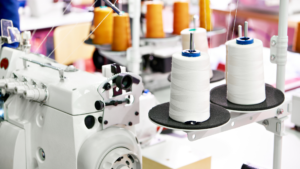
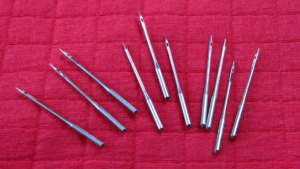
![Read more about the article How To Unfreeze A Sewing Machine: A Comprehensive Guide [2023]](https://www.sewkitkit.com/wp-content/uploads/2021/08/machine-3-300x169.png)
